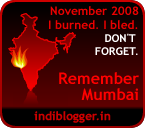It
is a typical Chetan Bhagat novel – from the viewpoint of a female
protagonist. I frankly never understood why people hate Bhagat so
much. I felt this book was a light read with a few 'feminist'
concepts discussed – career-oriented women, career vs. motherhood,
etc. It takes you through NYC, Hong Kong & London with a fair bit
of Goa thrown in. It does seem like a movie script but I still felt
it is better than most movies these days. This book apparently broke
all pre-booking records on Amazon thus reaffirming Bhagat's
popularity!
The
book's blurb states, “Hi, I am Radhika Mehta and I am getting
married this week. I work at Goldman Sachs, an investment bank. Thank
you for reading my story. However, let me warn you. You may not like
me too much. One, I make a lot of money. Two, I have an opinion on
everything. Three, I have had a boyfriend before. Okay, maybe two.
Now if I was a guy, you would be okay with all of this. But since I
am a girl, these three things don't really make me too likeable, do
they?”
It's
a story about Radhika and her professional & personal life. She's
an ambitious woman who will not stop anything to advance in her
career and she's also willing to commit herself to somebody &
give the relationship her all. The book is a fast-paced, breezy read
with quite a few interesting food for thought. Sample this: Radhika's
character thinks to herself, “Why do we need our men to praise and
validate us in order for us to feel accomplished?” That's quite
true, right? By the way, Radhika keeps talking to herself in her mind
throughout the book [I guess so do most of us].
Some
thoughts that stuck with me while reading the book – she says
sorry to a guy for 'snapping' at him – I wonder how many men would
say sorry to a woman for 'snapping'? That's an intrinsically feminine
thing, I guess. The book also deals with women's insecurities and
asks if women can take compliments. It also talks about a world that
has been designed by men where women cannot even rejig office
timings, as they want to fly while also have a nest at the same time.
Bhagat
also highlights how men mostly seem to have the upper hand in a
relationship; when a woman exerts authority/control, she's made to
feel guilty & bad about it. Bhagat is qualified to write about
women's careers considering he gave up a full-time job more than 10
years ago and is a proud house-husband taking care of his twin sons
while his wife works full-time.
There
are a whole lot of restaurants that feature in the book including in
NYC Harry's Cafe & Steak, Nerai, Whiskey Blue and Dishoom in
London.
I
am rating this book 3 out of 5 – it's not one of Bhagat's better
books (like Five Point Someone or Two States) but it's definitely not
as bad as his critics are making it out to be.
I
was given a review copy of this book by Rupa Publications in exchange
for an honest review.
